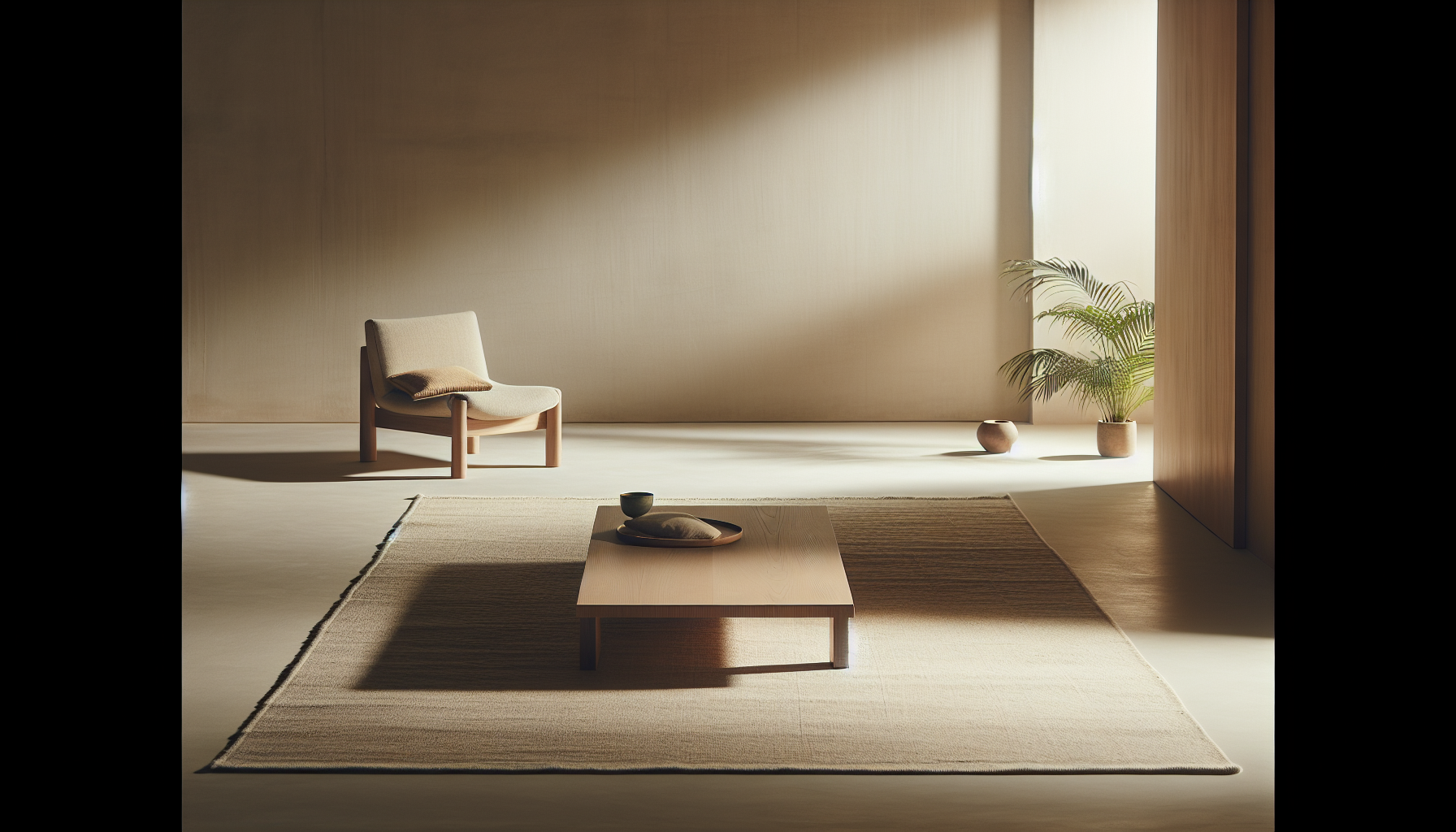Have you ever wondered how to create a harmonious living environment in an open-plan space using a Japandi style?
Understanding Japandi Style
At the heart of Japandi style lies a beautiful blend of Japanese minimalism and Scandinavian functionality. This aesthetic emphasizes simplicity, natural materials, and a calming color palette. If you appreciate clean lines and a clutter-free environment, this design style might resonate with you.
Key Features of Japandi Design
- Natural Materials: Think wood, bamboo, and stone. These elements bring warmth and authenticity to your space.
- Muted Color Palette: Soft neutrals, earthy tones, and occasional pops of color create balance and tranquility.
- Functional Furniture: Pieces should not just look good; they should also serve a purpose and add to the comfort of the space.
- Minimal Clutter: Every item should have a designated space, which helps in maintaining a serene atmosphere.
- Cozy Aesthetic: Despite being minimalist, the arrangement should feel warm and inviting.
Getting these elements right will set a solid foundation for your open-plan area.
Analyzing Your Open-Plan Space
Before you start arranging furniture, it’s crucial to assess your space. Each open-plan layout is unique, so understanding your specific area will help you make the best decisions.
Measuring Your Space
Begin by measuring your floor dimensions. Take note of any irregularities such as nooks or architectural features. Write down the measurements to prevent making errors later on.
| Dimension | Measurement |
|---|---|
| Room Length | ___ ft |
| Room Width | ___ ft |
| Ceiling Height | ___ ft |
| Features (like windows, doors) | ___ |
Consider Lighting
Natural light can significantly affect how your space feels. Assess where your windows are located and how light enters your home throughout the day. Light can enhance certain colors and materials, making your space feel more alive.
Note Traffic Patterns
Identify the flow of movement within your space. High-traffic areas should remain uncluttered to allow easy navigation. This consideration will guide you in placement for larger furniture items such as sofas or dining tables.
Zoning in Open-Plan Spaces
One of the challenges with open-plan layouts is the need for defining different areas without solid walls. Zoning allows you to create separate areas for dining, living, and working while maintaining an overall cohesive feel.
Creating Functional Zones
Think about how you want to use your space. Do you prefer a cozy reading nook, or perhaps a combined dining and kitchen area?
| Zone | Activities | Suggested Furniture |
|---|---|---|
| Living Area | Relaxing, entertaining | Sofa, coffee table, side chairs |
| Dining Area | Eating, socializing | Dining table, chairs, sideboard |
| Work Area | Home-office tasks | Desk, ergonomic chair, shelving |
Using Furniture to Define Areas
The placement of furniture plays a pivotal role in creating these zones. For example, a sofa can act as a natural divider between the living and dining areas, but you also can use rugs or plants to visually separate different spaces.
Choosing the Right Furniture
In a Japandi-inspired open-plan space, your furniture choices should align with both functionality and style.
Selecting Pieces with Purpose
Every piece of furniture should serve a specific function in your space. Choose items that are not only aesthetically pleasing but also practical.
- Sofas: Opt for low-profile sofas with clean lines to complement the simplicity of Japandi design.
- Tables: Consider multifunctional coffee and dining tables—ones that can easily accommodate guests but also serve daily needs.
- Storage Solutions: Look for minimalist cabinets or shelving units that blend seamlessly into your space yet provide ample storage.
Materials Matter
Choosing the right materials can elevate your space.
- Wood: Prefer light, natural woods like oak or pine to retain warmth.
- Textiles: Use linen or cotton in your textiles to maintain an air of simplicity and comfort.
- Ceramics: Incorporate handmade ceramic pieces which can add character and a touch of artistry.
The Art of Arrangement
Once you’ve settled on your furniture and established zones, it’s time to start arranging. This is where you can get creative while sticking to the principles of Japandi design.
Symmetry vs. Asymmetry
After determining how your furniture will be used, consider the balance of your arrangement.
- Symmetry: If you like order, keeping sofas and chairs facing one another can create a harmonious look.
- Asymmetry: Feel free to break the norms to foster a more casual, inviting atmosphere. A side table next to a chair rather than a matching one across can create visual interest.
Establishing Focal Points
Every room benefits from a focal point that draws the eye. This could be a beautiful piece of art, a stunning view, or a fireplace. Arranging furniture around a focal point helps in creating unity in the design.
Layering Your Spaces
To enhance coziness, consider layering elements like rugs and lighting.
- Rugs: Use rugs to define areas while adding texture—look for neutral shades or subtle patterns that fit within the Japandi palette.
- Lighting: Utilize a variety of light sources like floor lamps, table lamps, or lanterns that provide both ambiance and functionality.
Adding Personal Touches
No space feels complete without personal touches.
Incorporating Plants
Plants not only bring life to a room but also help purify the air. Consider including low-maintenance greenery like succulents or snake plants which align with the Japandi ethos of nature.
Decorative Accessories
Choose a few curated accessories that complement the overall aesthetic without cluttering your space. Opt for handmade pottery, art pieces, or woven baskets.
Color Dashes
Using a minimalist approach allows for color integration in small dashes. This could be through a few colorful cushions, a piece of art, or even an accent wall. Just be sure to keep it subtle to maintain the tranquility essential to Japandi style.
Maintaining Your Space
After arranging, keeping your space tidy is essential.
Decluttering Regularly
Set aside time weekly to declutter and reassess your items. Keeping only what ‘sparks joy’ will help maintain the peaceful ambiance of your open-plan space.
Cleaning Tips
Stick to natural cleaners when maintaining your space and ensure that your fabrics are clean and well-kept. Regularly dust wooden surfaces to keep them looking fresh and vibrant.
Conclusion
Arranging furniture in a Japandi open-plan space is about embracing simplicity and harmony while ensuring that every piece serves a purpose. By understanding the design principles and carefully considering how you want to use your space, you can create a tranquil, inviting environment that resonates with your personal style.
As you embark on this journey, remember that patience is key. Don’t rush the process; take your time to curate and arrange your space, allowing it to evolve into a restful sanctuary that reflects your aesthetic.

